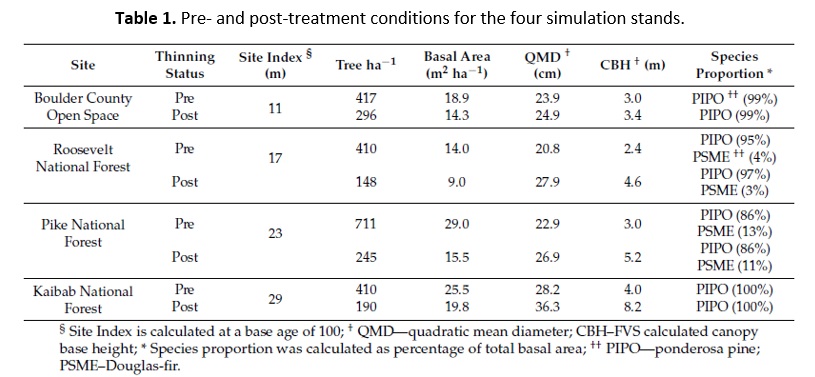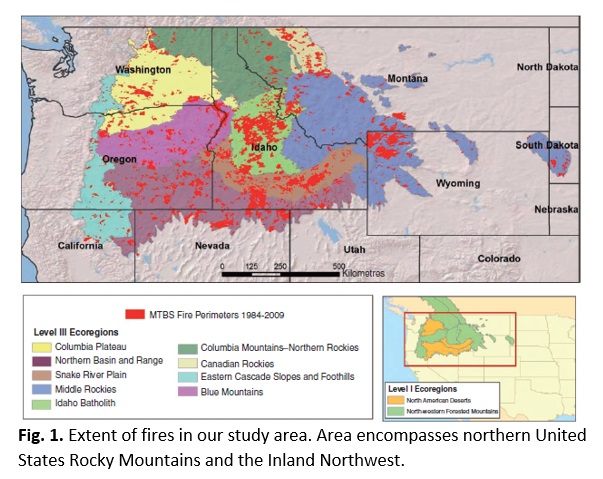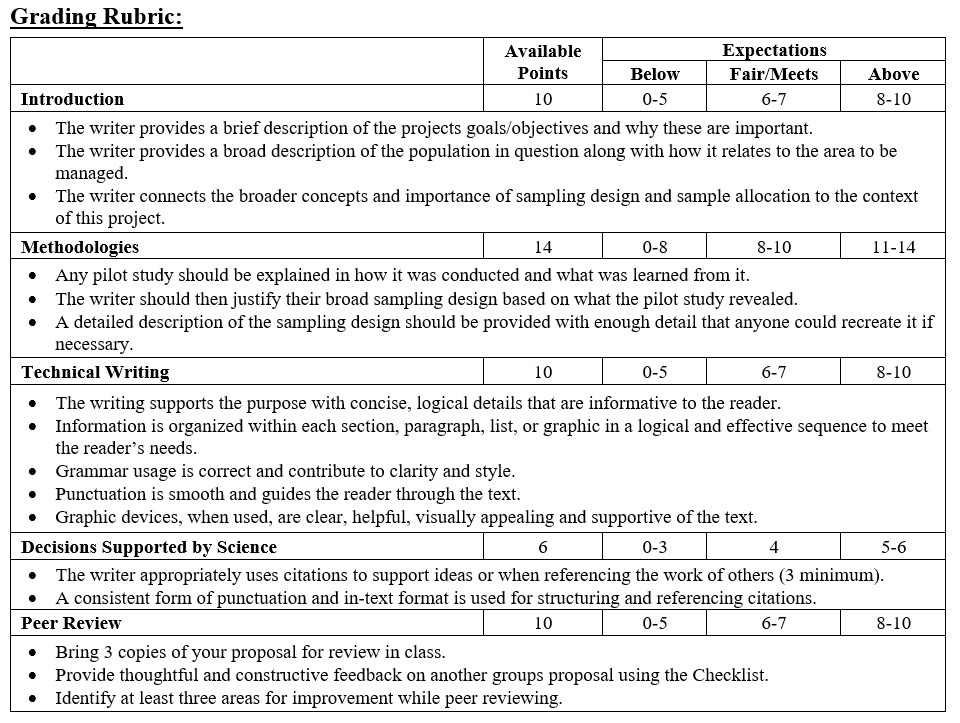F 321 – Project Proposal
Task: Your boss has asked you to write a proposal outlining your inventory strategy. You will have a crew of 4-5 individuals to carry out the most feasible, rigorous, and statistically viable inventory to address the landowner’s needs. In order to better understand what you are getting into, you decide to visit that stand in order to see just how variable the property is. During this trip you will install some random plots to evaluate the variability of the overstory density and surface fuel loading. This should provide insight to determine details like how many plots you will install, how they will be laid out, and what information will be collected. You must justify the techniques that you use in terms of both efficiency and statistical rigor by using the best available science. Since you are helping your counterpart at the company by reviewing a proposal they are submitting, they have agreed to review your proposal if you bring it to them on October 8th. Giving you time to incorporate their suggestions before the final paper copy of your proposal for the project is due to your boss at 5:00 pm on Friday October 12th.
Proposal Instructions: This report is to be done in groups of up to 3 people and should be 1-2 pages typed using 1.5-line spacing and Times New Roman 12pt font. Feel free to collaborate on thinking through these concepts, just make sure the written explanation of what you intend to do comes from your group. Bring 3 copies of your report to class on Oct. 8th for peer-review. A printed copy of your report should be submitted to the Instructor’s mailbox by 5:00 pm on Friday Oct. 12th.
Review your proposal against this checklist to ensure all important elements are covered:
- Introduction
- Conveys the landowners desired management objectives and the reason why they want to manage for these things.
- Articulates what characteristics need to be assessed to inform the objectives.
- The broader landholding is described and the target population is framed within its context.
- Linkages to proper sampling design and sample allocation are made within the context of the project and connected to the statistical, managerial, and economic benefits it can provide.
- Methodologies
- Any preliminary information is described for how it was collected and will be used to inform the sampling process.
- All necessary sample design planning steps are adequately described (sample size estimation, stratification, allocation, etc.).
- All sample design elements are thoroughly defined so anyone with forestry knowledge could implement the process, including experimental unit, sample size, plot spacing, field navigation between plots, observations to collect, and representative measures for summarizing the data.
- Technical Writing
- Defined formatting expectations are followed.
- Complete explanatory captions accompany tables and figures, and all tables and figures are referenced in the text.
- Consistent formatting is used throughout the document to make it easier for the reader to follow.
- Decisions Supported by Science
- A minimum of 3 scientific references are used to support statements of fact or connect ideas.
- All citations are correctly and consistently referenced in the text and at the end of the document.
Examples for Citing Literature
– At the end of the document use the following citation conventions:
- Peer-reviewed Journals (multiple authors):
- Carrot, Y.H., Turnip, J.U.H. and Tomato, A.T. (2010). Spectral analysis of mixed vegetables in pies. International Journal of Vegetable Science, 19, 976-983.
- Peer-reviewed Journals (two authors):
- Carrot, Y.H. and Turnip, J.U.H (2005). Soup mixes: a comprehensive review. International Journal of Soup Science, 14, 245-248.
- Peer-reviewed Journals (single author):
- Carrot, Y.H. (2005). Carrots in the vegetable word. International Journal of Carrots, 14, 245-248.
- Books / Book Chapters:
- Carrot, Y.H. and Turnip, J.U.H. (2001). The use of potatoes in soup: a review, in “Soups of the World”, Ed. Fried Potatoes, Wiley-Blackwell, pp 67-79.
- Agency Reports:
- Carrot, Y.H., Turnip, J.U.H. and Tomato, A.T. (2010). Review of soup quality standards within the National Park Services’ cafeterias. NPS report, USA, pp 46
– To reference an article in the text as someone saying something:
- As we can see from Carrot (2002), the choice in soup mix is very important
- Carrot et al. (2002) tell us that the freshness of vegetables influences the soup.
- This is supported by Carrot and Potato (2002) who showed how vegetable freshness impacts acidity.
– To attribute a statement in the text to an article:
- Single Author:
- The quality of a soup is impacted by the freshness of the vegetables (Carrot 2002).
- Multiple Authors:
- The acidity of a soup is impacted by the freshness of the vegetables (Carrot et al. 2002).
- Multiple Citations:
- Vegetable freshness impacts the acidity and quality of a soup (Carrot 2002; Carrot et al. 2002).
Examples of Figures and Tables



Code of Conduct: Do not copy and paste material from these instructions, papers, or books when writing your essay, the only exception is that the provided maps may be reused. Attempt to rewrite in your own words the message you want conveyed and then provide proper citations. Failure to do so will result in a score of 0.
